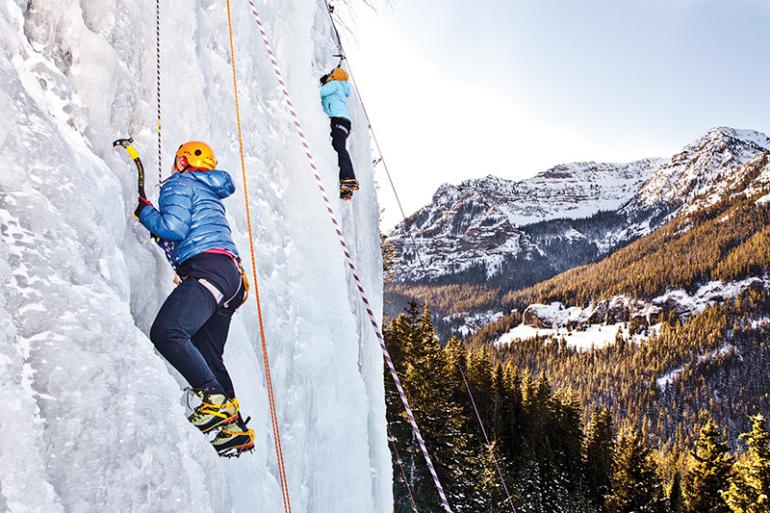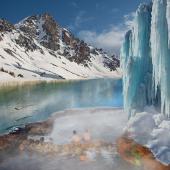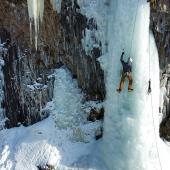Tool Time
Climbing tips & tricks.
Once the domain of hardened alpinists, ice climbing has come a long way in its evolution and now virtually anyone (thanks largely to modern equipment and Gallatin County snowplows) can enjoy a sense of adventure, complete with warming afternoon sun and hot cocoa between rounds on the vertical. Here are a few quick pointers to accelerate your learning curve.
Efficiency First
Commonly mistaken for a brute sport, ice climbing is actually an endurance event. Don’t waste energy trying to climb hand-over-hand like Stallone in Cliffhanger; pushing up with your feet will gain elevation far more easily.
Love Triangles
Well-known for their inherent stability, triangle shapes can be applied to your posture to ease progression. After placing one tool overhead, move your feet in baby steps to the same height as one another, just past shoulder-width apart, and center your body beneath said tool. The three points of contact should form a perfect triangle, providing a stable base to work from. Place the second tool overhead and repeat, with your hips tucked toward the ice while you swing and your butt sticking out as you move your feet.
Aim for the Concave
Concave ice is far less likely to explode than convex ice. Remember the surface-tension experiment from science class, with the over-filled water glass? Same thing, but much more dramatic. Take advantage of other features in the ice as well. Often you will find natural footholds; combine these with a light kick of your crampons, and then hold your foot still. Keeping your heels low will save strain on your calves and help maintain a stable stance.
Be Nice to the Ice
That all sounds good, but it still looks crazy, right? It’s all relative—there are more dangerous climbs and less dangerous ones. The trick is being able to recognize the difference. Ice climbing, much like skiing, is all about understanding the medium. Just as different snow conditions demand different techniques and differing degrees of snowpack instability afford greater or lesser risk, frozen waterfalls offer a broad range of conditions as well, from friendly, sun-warmed “thunker” ice that behaves like soft plastic, to cold, brittle sheets that shatter and fall with the slightest provocation.
Pete Tapley has been dangling from ice for more than 20 years.











